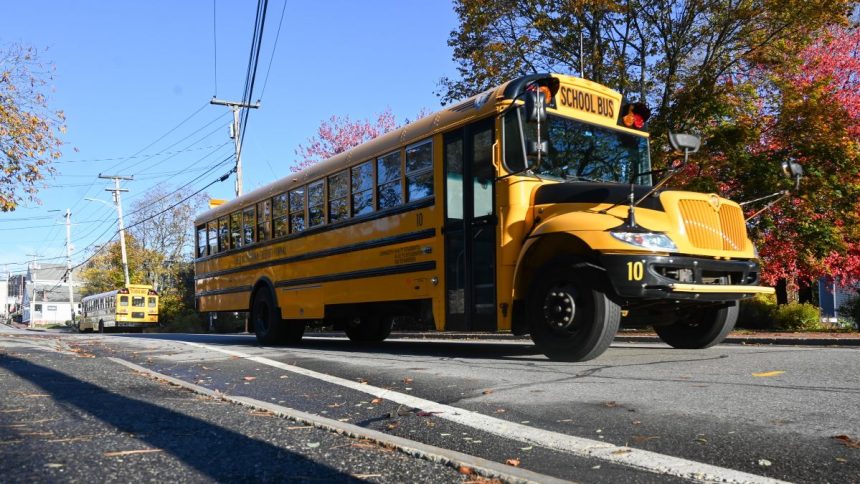Maine, once a national competitor in student achievement, now sits at or below the national average for standardized test performance.
While scores nationwide have dropped since the COVID-19 pandemic, Maine student performance has been sliding for more than a decade.
And a Maine Monitor analysis of 20 years of student test scores on the National Assessment of Educational Progress, or NAEP, showed that some students are sinking to the bottom faster than others. Low-income students and children with disabilities saw peak test scores on the NAEP starting around 2007. Then these students started to see huge losses.
[Click here to read how Maine has struggled to respond to falling scores]
Between 2007 and 2024, the portion of all Maine students reaching at least a partial, basic level of understanding of reading and math fell more than 14 percent.
But the percentage of students with disabilities reaching the same, bare-minimum performance level or higher fell more than 32 percent — in some subjects more than 40 percent. The group of low-income students meeting that level, meanwhile, fell more than 23 percent.
The percentage of Maine test takers performing at a basic level or more is lower than the national average. (The NAEP results are only presented as percentages, not total numbers, and the exact loss in performance depends on the subject and grade level.)
The Maine Monitor ran the data by two education researchers to confirm that children with disabilities and from low-income households were sliding significantly.
Students with disabilities have plans that provide accommodations for learning; they may have autism, dyslexia and more.
Economically disadvantaged students include children who come from low-income households, are homeless, or may qualify for programs such as free and reduced lunch.
Other groups of students have been struggling as well. Black students saw significant losses in test scores, as did English language learning students, though data collection for both of these groups has been inconsistent over the years given their small numbers.
On the NAEP test, students can score at four levels. If they meet the basic level, it means they showed some, but not a complete, understanding of the fundamental things kids usually know at their grade level.
For instance, in reading, fourth graders meet the basic level if they can at least make simple inferences from text, and eighth graders meet it if they can answer specific questions about the text.
At the proficient level, or the level that the National Assessment Governing Board describes as the goal for all student performance, children show a solid understanding of challenging math and reading skills. The percentage of students performing at the proficient level in Maine started to decline between 2013 and 2017 across grade levels and subjects.
Advanced-level students, meanwhile, have mastered math and reading skills. As a whole, between 2 and 10 percent of Maine students perform at an advanced level across grade levels and subjects. This range for the top tier of performance has stayed fairly consistent over time.
Students fall into a fourth category of performance, called “below basic,” when they cannot demonstrate even fundamental knowledge in reading or math.
The Monitor analysis showed that the percentage of students performing at this lowest level has grown since 2007. For instance, about 59 percent of fourth graders with disabilities tested below the basic level on reading in 2007. By 2024, about 78 percent of these students did.
In the same subject in 2007, 41 percent of low-income fourth graders tested at the below basic level. In 2024, 59 percent of these students did.








